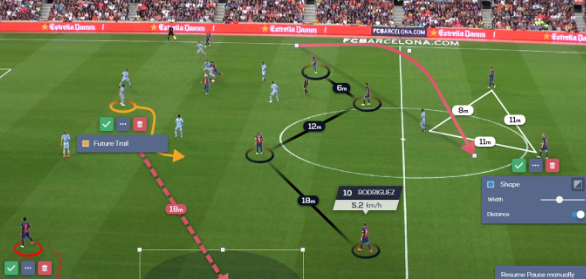
Sports Analysis Tools: Exploring Software and Applications
Sports analysis is an essential tool for athletes, coaches, and sports enthusiasts alike. It involves the systematic examination of an athlete’s performance data to increase his or her chances of success in future sports events. Sports analysis can help athletes identify their strengths and weaknesses, identify potential areas for improvement, and design effective training programs. In this article, we will provide you with the ultimate guide to sports analysis, covering techniques and strategies that will help you become an expert in this field.
1. Gathering Data
To begin your sports analysis, you need to gather data on the athlete’s performance. This data can include information such as speed, agility, endurance, heart rate, and other relevant physiological measurements. This data can be obtained from various sources, including wearable technology devices, video footage of sports events, and other athlete metrics. Once all relevant data is collected, it is important to organize it and record it in a spreadsheet or database.
2. Analyzing Data
Once you have all the data you need, the next step is to analyze it. There are various statistical tools you can use to analyze sports performance data, including regression analysis, factor analysis, and principal component analysis. With these tools, you can identify patterns and trends in the data and use these insights to make informed decisions about how to adjust your training programs, determine the best course of action in competition situations, and develop new strategies for success.
3. Developing Strategies
Once you have analyzed the performance data, the next step is to develop strategies for future sports performance. Based on the patterns and trends you identified in the data, you can set goals for the athlete, develop customized training plans, and design targeted workouts to improve performance in specific areas. This process involves working closely with athletes, coaches, and physical therapists to develop a comprehensive strategy that takes into account the athlete’s health, training capacity, and desired outcomes.
4. Feedback
One of the most important aspects of sports analysis is providing feedback to athletes. Feedback is the information provided to athletes about their performance, and it is essential for improving their performance in sports events. Feedback can be done in any number of ways, including written reports, verbal feedback, video analysis, and even social media. The key to providing effective feedback is to be specific, accurate, and constructive.
5. Implementing Changes
Finally, once your analysis is complete, the strategies are developed, and feedback is provided, it’s time to implement those changes. Implementation involves putting the strategies into action, providing ongoing coaching and support, and making adjustments as necessary to maximize the athlete’s performance. Successful implementation depends on the athlete’s willingness to take on feedback and adjust their behavior according to the strategies developed.
Conclusion:
Eat and play verification community (먹튀검증커뮤니티) Sports analysis for athletes and coaches is a critical component of success. It provides insights into performance to help athletes improve their skills, develop targeted training plans, and design new strategies for success. The techniques and strategies presented in this article will help you become an expert in sports analysis and help you achieve your goals in sports events. By gathering data, analyzing it, and providing feedback, you can make informed decisions that help you achieve a competitive edge. With proper implementation, the strategies presented in this article will help you achieve your goals and make your success in sports events possible.